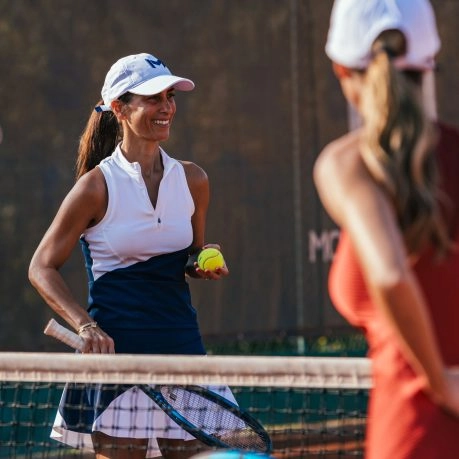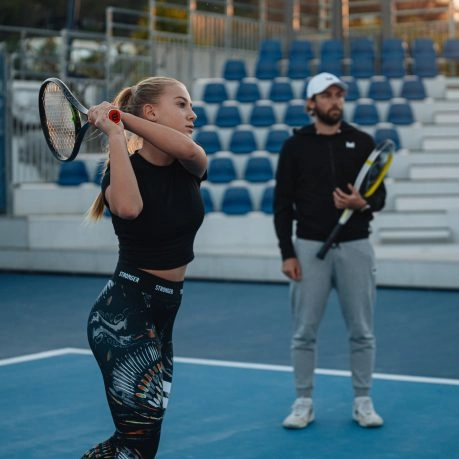Left arm extended and bent forward
To guide the ball forward and inside the court, the left arm must be extended to the fingertips. This action should provide adequate height. It should also be angled forward to give sufficient depth to the shot. This will put the player in a position to impact with his body weight, while also transferring the power generated by the extension and thrust of the legs.



















